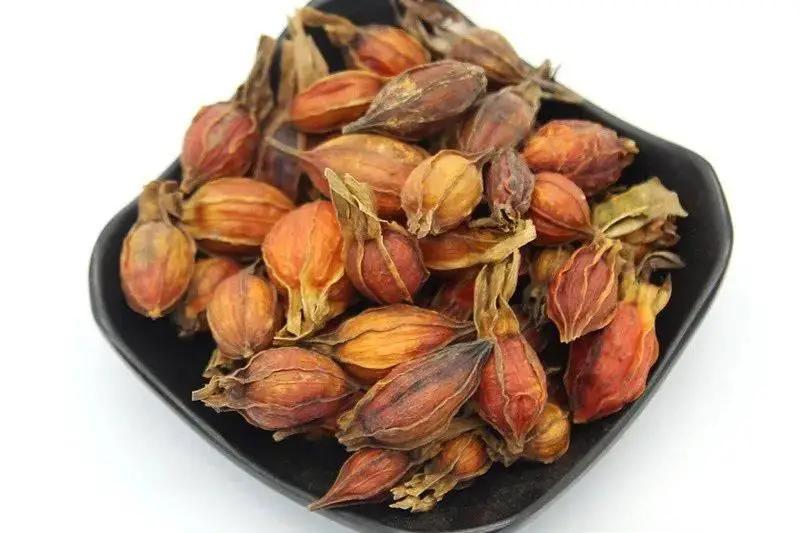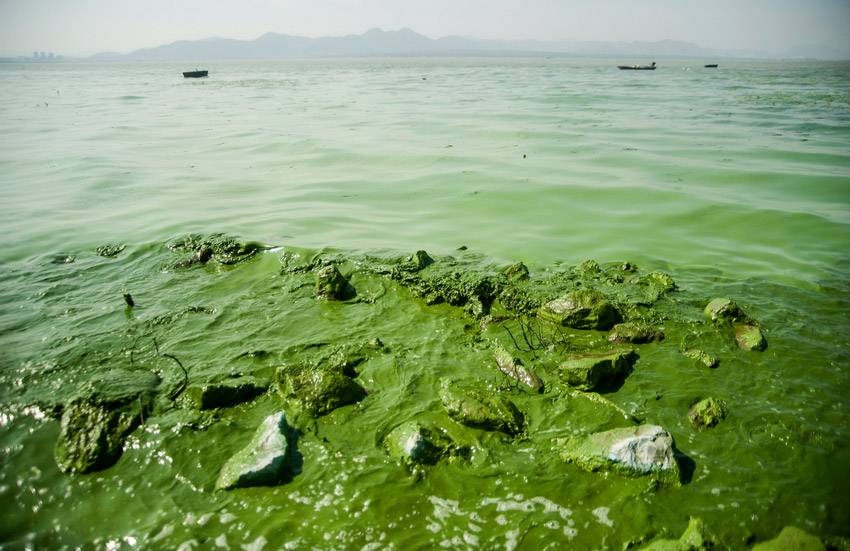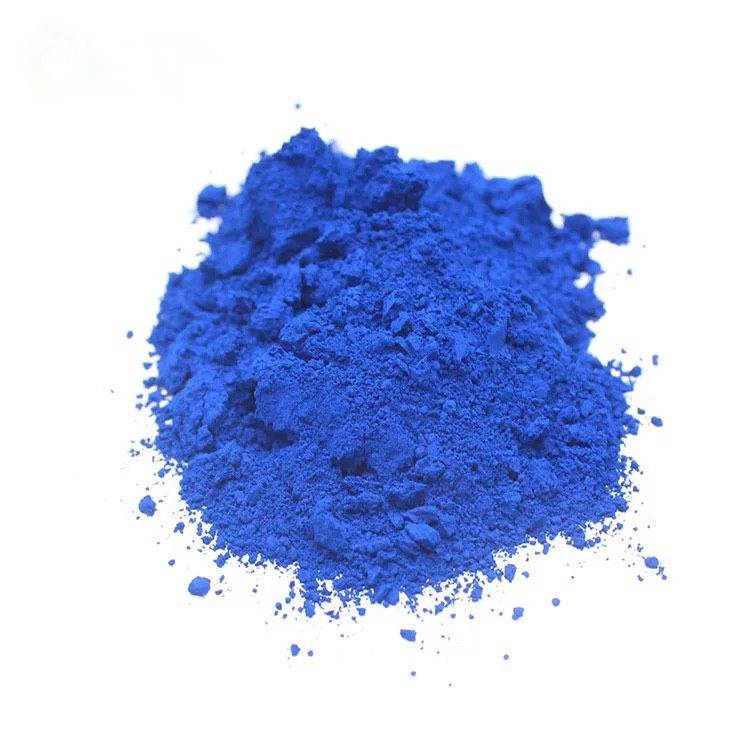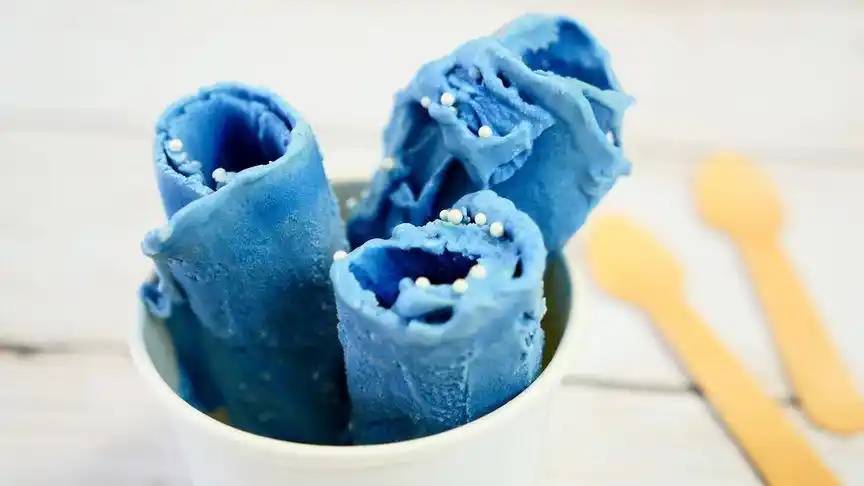中国の天然青色食品着色の研究
Pigments are substances that can color the object being dyed. They are also known as colorants and have a wide range of applications in production, life, and scientific research. The history of pigment development and application around the world is also very long. Since the British W. H. Perkins synthesized the organic pigment aniline violet for the first time in the world in 1856, synthetic pigments have dominated the pigment market due to their excellent performance, low price, and ease of use. However, since countries or institutions such as the United Kingdom (1967), the United States (1973), and the World Health Organization (1984) have successively questioned the safety of synthetic pigments (tar pigments) on the human body, and there have been more and more reports on the research of the hazards of pollutants such as arsenic and lead that may be brought in during the synthesis process, the variety of products using these pigments in various countries is gradually decreasing. The number of synthetic food colors permitted for use in China has also been reduced from more than 30 in the past to 10 at present, and the rapid development of natural pigments will be an inevitable trend [2].
天然顔料 generally refer to pigments made by using substances that exist in nature (such as plant and animal materials) or secondary metabolites produced by cultivation methods and undergoing certain processing. Due to their advantages of being safe and reliable, non-toxic and having no side effects, natural hues and versatility, they have been widely used with the development of the food industry, pharmaceutical industry, daily chemical industry and aquaculture industry. Currently, 43 types of natural pigments are permitted for use in food in China. Natural pigments have already dominated the food coloring market and are growing at a rate of 10% per year [3]. The raw materials for processing natural pigments come from a wide range of sources (from animals and plants, microorganisms, minerals, etc.), and there are many types (as of 2004, there were about 600 recorded types [4]).
ただし、これらの天然顔料は赤や黄色系が多く、青系は非常に珍しい。文献では「貴重」、「非常に少ない」、「希少」などの言葉で言及されることが多い[5-7]。中国に記載されている56の顔料のうちの1つです#39;s gb2760-2007「食品添加物の使用のための衛生基準」では、クチナシ青色顔料とフィコシアニン(すなわち、藻類青色卵白顔料)の2つの青色顔料しかありません。青は三原色の一つで、様々な色合いを混ぜて使うことができます。しかし、天然青色顔料はその希少性から国内外で供給が不足しています。そのため、天然青色顔料の積極的な研究開発は、実用的に非常に重要であり、魅力的な市場の見通しを持っています[8]。
天然青色顔料の1天然源
生まれつき青い顔料 are rare among natural pigments, and their natural sources are also very limited. Organic natural 青い顔料 are mainly derived from plants and microbial materials. The leaves of plants in the genus Indigofera, such as indigo, tea blue, horse blue, Wu blue and woad, can be used to make indigo dye [4]. Gardenia blue is made from gardenia glycoside in the fruits of Gardenia jasminoides [8]. Plant sources such as Ophiopogon japonicus fruit [9–10], Peristrophe baphica [11], Brassica oleracea [12], and purple and blue-grained wheat seeds [13] are used to produce the corresponding blue pigments. Although it has been reported that genetically modified cotton and genetically modified roses can produce blue pigments, these genetically modified plant materials cannot be used to produce natural blue pigments at present due to their rare sources [14–15]. Algae such as spirulina, cyanobacteria and chlamydomonas can be used to produce algin blue pigments [16-18]. The oyster shell algae Haslea ostrearia can produce the blue malachite pigment, which increases the economic value of oysters [19]. Garlic (Allium sativum) can turn green after being pickled in vinegar, and blue pigment can be isolated [20-21]. Some microorganisms such as Streptomyces sp., Pseudo- monas sp., Pseudoalteromonas sp., Duganella sp., Aureobasidium sp., purple non-sulfur bacteria, etc., can produce different kinds of blue pigments during growth using a culture medium. Some genetically engineered strains can produce indigo blue pigments [22-23].

2天然青色顔料の構造と色
Although natural blue pigments are similar in hue, their color-producing mechanisms are different. Ultimately, the different color-producing mechanisms are determined by differences in the chemical structure or spatial structure of the pigment molecules. The molecular structures of natural blue pigments prepared from different raw materials or by different methods may be different, and the physical and chemical properties and application scope of the pigments may also differ accordingly. The structures and related properties of common natural blue pigments are shown in Table 1.
ルビキサンチンが青色に変わるph範囲は非常に狭く、技術的には天然の青色色素とは言えない。
3微生物天然青色顔料
現在、ほとんどの天然青色顔料は、動物や植物の材料から生産されていますが、季節、気候、原産地などの要因によって入手可能性が制限されているため、供給量が非常に限られているため、高価で使用が困難です。微生物は急速に増殖し、自然界には色素を生産する種が豊富に存在します。微生物資源を利用して天然顔料を生産することは、基本的に資源、環境、時間、空間に制限されることはなく、植物や動物由来の材料を利用して天然顔料を生産することで他に類を見ない利点があります。微生物を用いて天然顔料を生産することは、最終的には天然顔料の主流となるでしょう[24]。
The use of microbial fermentation methods to produce a variety of natural pigments such as blue pigments and red yeast pigments has also become a reality [25]. In fact, the production of the main natural blue pigments on the market currently requires the participation of microorganisms. For example, the preparation of indigo blue pigments and gardenia blue pigments requires the participation of microorganisms in the fermentation process, while the cyanobacteria, spirulina, and chlorella that produce phycocyanin pigments are themselves microorganisms. In addition, there are still many microorganisms in nature that can produce natural blue pigments, but most of the work on using microbial fermentation to produce natural blue pigments is still at the laboratory stage [7]. There is still a long way to go before the industrial production of natural blue pigments using these microorganisms directly fermented culture medium can be realized. The reported blue pigment-producing microorganisms and their pigment-related properties are shown in Table 2.

微生物を使用して青色顔料を製造する研究には、主にいくつかの側面があります。青色色素を生成する微生物のスクリーニングと同定;2. 物理化学的性質と青色顔料のいくつかの毒性学的性質の決定、このような顔料の安定性に温度、光、ph、金属イオン、酸素、複雑な化合物、および添加物の影響など;青色顔料の分光特性、その抗酸化および還元能力、抗菌活性、 (癌)細胞毒性、および遊離基を除去する能力;3. 発酵青色色素培地のスクリーニングと最適化。いくつかの青色色素の分子構造や、青色色素を産生する微生物の生理的・生化学的・分子レベルでの代謝機構については、未だ解明されていません。工業生産をより良い方向に導くためには、微生物発酵青色顔料の産業発展のための理論的基盤を提供するために、多くの詳細な研究が必要です。
4天然青色顔料の抽出、分離、後処理
クチナシ色素とアルガブルー色素は、天然食品の色のための市場で2つの支配的な青色色素です。シアノバクテリアと紅藻は、藻類の青色色素の2つの主要な供給源であり、スピルリナは、藻類の青色色素の生産に適した最も費用対効果の高い原料である。処理方法を使っていから解放し藻青い顔料藻大半が、腐食阻害薬に加え、順(ウルトラ)低温冷凍してから解凍し、そしてhomogenisation(17、40)が出たり酵素解散の組み合わせの别れを高圧homogenisation藻細胞[39]。nostocのような大規模な藻類では、高速組織ホモゲナイザーを使用して均質化が行われ、その後酵素分解(微生物発酵と藻類の自己分解によって達成される)が行われる[18]。細胞内のフィコビリタンパク質は、シリカゲルカラムクロマトグラフィー[17]を用いて分離・精製するか、超臨界co2液を用いて黄色顔料を抽出した後、水性抽出剤を用いてフィコビリタンパク質を分離・精製する[41]ことができます。
The purified phycocyanin is vacuum-concentrated, and then freeze-dried or spray-dried to obtain a dry pigment powder. Microencapsulation before drying can improve the heat resistance of the pigment [18]. There are currently two processes for preparing gardenia blue pigment from gardenia fruit powder: one is a one-step process in which gardenia blue pigment is produced by fermenting gardenia fruit powder aqueous extract with an enzyme-producing strain; the other is a two-step process in which gardenoside is first separated and concentrated from gardenia fruit powder aqueous extract, and then gardenia blue pigment is produced by enzymatic reaction.
最初の工程ではクチナシの色は鈍く、色価が低い。後工程で分離・精製することが難しく、歩留まりが低い。2つ目のプロセスは、これらの問題をより良く解決します[42-43]。マクロポーラス吸着樹脂(hpd100など)カラムを用いたクチナシ粉末水注入からクチナシ黄色素を抽出した後の残液にクチナシが含まれる。その後、廃液は膜ろ過(マイクロフィルトレーション(0))などの技術を使用して濃縮・濃縮されます。1μm)解明とnanofiltration(100ダルトン)濃度)[44]dual-phase抽出[45]、と高速逆流したクロマトグラフ(HSCCC)[46]色素細胞を良質のアカネ科クチナシ準備。調製した色素は、ウルトラフィルトレーション[47]、キトサン誘導体カラムクロマトグラフィー[44]、または(d301)マクロポーラス吸着樹脂カラムクロマトグラフィー[48]などの技術によって精製・精製されます。

天然顔料は安定性が低く、劣化しやすいという共通の欠点があるため、天然顔料の安定性を向上させる研究が増えています。水溶性クチナシ青色顔料を無水物酢酸にエステル化し、疎水性クチナシ青色顔料を得た。これにより適用範囲が広がり、安定性もある程度向上した[49-50];紫キャベツ青色色素の耐熱性と耐光性は、フェルル酸とサリチル酸でアシル化した後に有意に向上した[51]が、一般的に天然青色色素の修飾に関する研究は少ない。
5 展望
中国での使用が許可されている43の天然顔料のうち#39;s current GB2760-2007 edition of Hygienic Standards for Uses of Food Additives, there are only two kinds of blue pigments: gardenia blue pigment and スピルリナは青の色素。China&#クチナシと乾燥スピルリナの39の生産は、世界で第一位[16,42]が、中国クチナシ青色顔料の品質は1980年代のレベルで、日本のそれよりも20年遅れている。「クチナシ紅」は日本で発売されて25年になるが、中国ではまだ空白である[8]。現在、中国産クチナシの青色素の98%が輸出されているが、天然の青色素は国内全体の生産量が少なく、供給が不足している[46]。

毎年10%の割合で成長している巨大な天然顔料市場に直面して、中国での天然顔料の開発は、顔料の種類の不足、供給源の相対的な不足、高コストなどの問題に直面しています[52]。このような観点から、今後は以下の分野に焦点を当てるべきである。生産工程と技術標準を改善し、青色顔料の生産と品質を高め、ローエンド製品からハイエンド製品への転換を促進し、製品の付加価値を高めます。2. 既存の原料を使用して、クチナシの赤などの新しい天然色素を開発します。第三に、青色色素の天然微生物資源の研究と利用を重視し、天然青色色素の国際研究の主導権を握るため、青色色素の新規系統を開発する。これは、動物や植物由来の材料から生産された天然青色顔料が市場の需要を満たすことができない状況を変える上で、非常に大きな意義があります。
参照
[1] deng zhiguang, liang yong, liu chonghua, et al。逆相hplcによる「青色色素」の迅速測定[j]。^ a b c d e f g h i『人事興信録』第17版、35-39頁。
[2] zou zhifei, pu min, li jianjun, et al。各国(地域)における食品着色料の使用状況と比較分析[j]。中国食品衛生学会誌,2010,22(2):112-121。
[3]李YW。青色色素を産生するストレプトマイセスの同定と発酵条件の研究[d]。Master&#^『仙台市史』仙台市教育委員会、2006年。
[4]翔b,高jr .天然顔料[m]。北京:化学工業出版社、2004年。
【5】zhao h, yan hx。青色色素を産生する海洋性ストレプトマイセス株の研究[j]。2009年食品研究開発、30(6):186-189。
[6]秦キム・ウナム)です。貴重な天然食品色であるバイオレット色素とブルー色素の抽出技術[j]。^『仙台市史』通史編(1)45-46頁。
[7] li y, zhang m . streptomyces zingiberensis産生青色色素の特性に関する研究。
[8] liu x, zhao b, zhang j, et al。クチナシの全面的な開発と利用。中国の野生植物資源,2008,27(1):19-26。
[9] tang chunyi, tang yanhua, wu yan, et al。オフィオポゴンの果実からの青色色素のマイクロ波抽出と特性評価[j]。^「china forest by-products, 2005(2)」(英語). china forest by-products(2005) . 2017年3月17日閲覧。
[10] cheng chao, li wei, mo kaiju, et al。ヒヨコの果実中の青色色素の安定性に関する研究[j]。2008年食物科学専攻、29(12):168-171。
[11] xie yunchang, wen yongxin, jiang xiaohua, et al。インディゴブルー前駆体の分子組成と化学変化[j]。2003年広西植物学、23日(4):367-369。
[12] zhang lianfeng, zhao lifeng。紫キャベツからの天然色素の抽出と特性[j]。^『仙台市史』通史館、2005年(平成17年)、51-52頁。
[13]元明祿。紫小麦の研究成果[j]。甘粛省農業科学技術、2008年1:32 -37。
[14]江苏紡績編集部遺伝子工学的手法によって生み出された藍と赤の綿繊維[j]。江蘇織物(版)、2003年(平成15年)(6)- 31に記憶されている。
【15】マギー余。青いバラの組換え育種[j]。中国科学技術fortune, 2006(9): 60。
【16】馮艶、文艶美、李憲文。アルジーブルー-栄養と健康促進機能が豊富な天然色素[j]。2007年(平成19年):171 - 173。
【17】高天栄、孫世中、魏小葵。スピルリナ[j]からの藻類青色色素の抽出。^『仙台市史』通史館、2002年、22(1):28-29頁。
【18】趙良中,段林東。nostoc flagelliformeからの青色顔料の抽出と特性。^ a b c d e f g h『科学技術史』第2巻、1998年、24-26頁。
[19]毛徳章,朱yaling, xing xinhui。青色顔料marennine [j]の現在の研究状況。食品科学,2011,32(5):321-325。
[20]趙キム・。酢の物にんにくの機能とその緑色色素の単離と特徴[d]。学位は博士(農学)、2005年。
[21] chen cong .ニンニクからの緑色色素の分離と精製および構造同定[d]。Master' s論文、山東農業大学、山東農業大学、2008年。
【22】李輝、呉雲。カロテノイドやインディゴを生産する系統の研究[j]。食品・発酵産業,1997,24(2):7-10。
[23] song jing, sun yongru, zhang liming, et al。大腸菌におけるインディゴ色素酵素遺伝子発現ベクターの構築[j]。2003年(平成15年)9月9日:ダイヤ改正。
[24]王君、張宝山。天然色素の微生物生産に関する研究[j]。微生物学の公報ローソクを消し34(3):580-583ますか。
【25】鄧相遠、王樹軍、李復超。天然顔料の資源と応用[j]。中国の調味料,2006(10):49-53。
[26] zhang h c, chen l, ji w m, et al。青色色素を産生する放線菌の予備同定とその特性の研究[j]。無錫軽工業大学紀要,1999,18(3):23-28。
[27] zhao d h, lu l, qin h l .微生物発酵による青色色素の安定性と毒性[j]。1998年発酵业24(5):方針だ。
[28] deng xiangyuan, wang樹軍,hou zumei, et al。海洋性ストレプトマイセスm259による高収量青色色素の物理的・化学的性質に関する研究[j]。2006年(平成18年)3月27日:35-39。
【29】孫延道、呂陵。streptomycesの青色色素成分の分離と分析[j]。journal of microbiology, 2007, 27(6): 5-7。
[30] li yiwei, chen xiaolin, zhang ming。青色色素発生株の生物学的特性とその基本的性質の研究[j]。journal of biology, 2007, 24(1): 41-43。
【31】鄧明榮、郭俊、朱紅輝。streptomyces violaceoruberおよび関連遺伝子によって生成される代謝物の抗菌および抗腫瘍活性に関する予備的研究。^「natural product research and development, 2010(22)」。natural product research and development(2010) . 2017年3月27日閲覧。
[32] g f gause。リモシジンは、プロアクチノマイセス・cyaneusが産生する新しい抗生物質[j]。j Bacteriolね1946年(昭和21年)51 局番号は649-653。
[33]恭良玉、王秀林、李彦彬。緑膿菌(pseudomonas aeruginosa)が産生するフェナジン色素の単離と精製と赤潮生物の生育への影響[j]。fudan journal (natural science edition), 2004, 43(4): 494-506。
【34】文禄、袁保鴻、李厚金。南シナ海の海洋性細菌pseudomonas sp.が産生し、抗腫瘍活性を有する青色色素[j]。日中山大学紀要(自然科学編),2005,44(4):63-65,69。
[35]孫愛峰、荘栄玉、王国良。海洋性細菌e18株の青紫色顔料の生物学的特性と安定性に関する研究[j]。微生物学の公報ローソクを消し34(4):691-694ますか。
[36] wang haisheng, lu yuan, xue yuan, et al。bacillus du従二位b2 [j]の青色色素成分の単離および化学構造解析。中国化学工学会誌,2008,59(3):630-635。
【37】陳伯、浦剛軍。aspergillus nigerの発酵性能に関する研究[j]。2002年(平成14年)11月15日-17日。
[38] yue huiying, huang xiao, zhao chungui, et al。非酸素産生光合成細菌における光合成色素の制御機構[j]。^『仙台市史』通史編、仙台市、2009年(平成21年)、331- 331頁。
【39】葉海輝、何秀芬、王秀蘭。スピルリナの破砕とスピルリナ青色色素の抽出[j]。華南熱帯農業大学会雑誌2001年7(3):30。
[40]劉環雲、王樹齢。スピルリナブルー色素の抽出と安定性に関する研究[j]。『河北経済経営大学会報』(総合版),2001(2):42-43。
[41] zhang kun, fang yanxiong, shao chen。スピルリナからの天然食品着色料の抽出に関する研究[j]。江蘇食品と発酵,1995(3):19-22。
[42]孫丽君。クチナシ青色色素の発色機構と二段階プロセスの研究[j]。^岩波書店、1994年(平成6年)3月8日、1-5頁。
[43] zhang jianguo, yu shunhuo, li xianxiang, et al。2段階法によるクチナシ青色顔料の製造条件に関する研究[j]。」。food science(2008年). 2018年2月29日閲覧。
[44] ling min, jiao yujian, li liming, et al。色価値の高いクチナシ青色顔料の調製と精製プロセスの研究[j]。2009年食品産業技術、30(6):262-264。
[45]梁華誠、李源、楊水平。二相液液抽出法により抽出したクチナシ黄廃液を用いた酵素法によるクチナシ青色素の製造に関する研究[j]。^ a b c d e f g h i(2009年)、153 -158頁。
[46] yang d, zhou m, zhu h, et al。hscccによるゲニポシドとゲニピンの分離とその色反応[j]。journal of guangxi university (natural science edition), 2010, 35(3): 493-496, 501。
[47] yang zhi, zhang fang, li mei, et al。クチナシ青色色素の調製と精製過程に関する研究[j]。河南理工大学紀要(自然科学版),2008,29(2):59-63。
[48] li jiachun, liang huazheng, wu zhimei, et al。マクロポーラス樹脂によるクチナギブルー顔料の分離精製に関する研究[j]。2005年(平成17年)4月1日:ダイヤ改正。
[49] yang z, zhang f, lin x, et al。疎水性クチナシ青色色素の調製に関する研究[j]。河南理工大学紀要(自然科学編),2008,29(4):24-27。
[50] zhang fang, yang zhi, gan chunji。疎水性クチナシ青色顔料の安定性研究[j]。河南理工大学紀要(自然科学編),2008,29(5):26-28。
[51] chen xue-hong, he ju-ping, qin wei-dong, et al。アシル化処理による天然顔料の安定化に関する研究[j]。^ a b c d e『日本経済史』第2巻、151-153頁。
【52】車双輝、杜啓珍、夏鳴天然青色顔料の研究成果[j]。2003年食品研究開発24(2):18 ~ 20。
[53] leonid v bystrykh, miguel a fernandez-moreno, jan k herrema, et al。streptomyces coelicolor a3によるアクチノホジン系青色色素の生産(2)[j]。^ a b c d e f g h i j . bacterio, 1996, 178(8): 2238-2244。


 英語
英語 フランス
フランス スペイン
スペイン ロシア
ロシア 韓国
韓国 日本
日本



